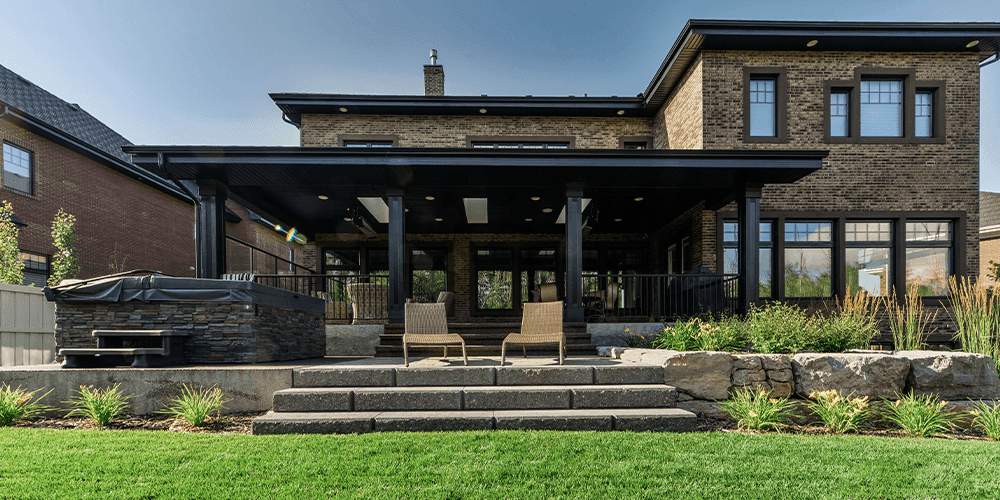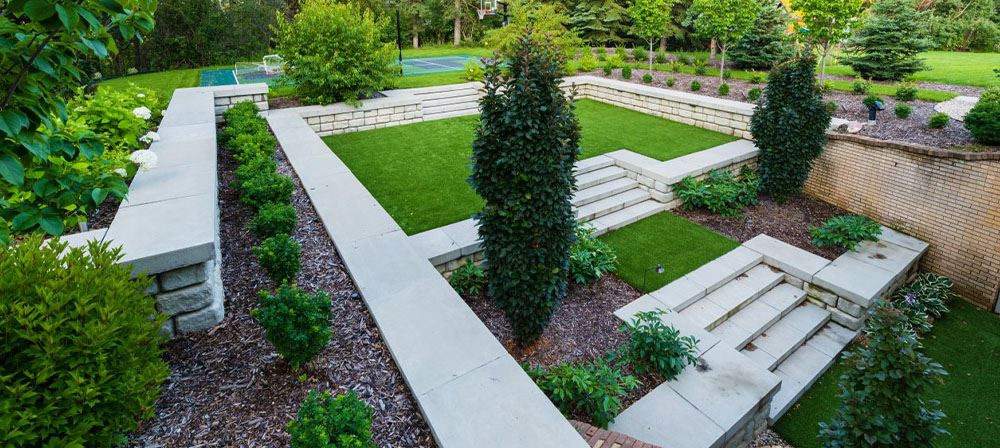Just like interior design, landscape design can take on endless possibilities depending on the homeowner’s personal aesthetic. While every project is unique, simply being aware of the broader styles available can be helpful for homeowners who are planning an outdoor renovation. That’s why we’re starting a new monthly segment of “Style Profiles!” Each profile will help you get familiar with different landscaping styles, features, and terms so you can better articulate your vision to your designer.
What is Traditional Landscape Design?
What we consider to be “traditional” in terms of garden and landscape design originates from the grand 18th century courtyards of France and England. These vast outdoor spaces would commonly surround palaces, religious complexes, and government buildings, emphasizing the significance of these edifices in the community. These early landscapes feature sprawling gardens, towering fountains, and elaborate statuary along with immaculately-kept plants.

Elements of Traditional Landscape Design
Today, traditional landscape design has maintained much of the grandeur of its origins, but has been adapted for contemporary urban life. Using structured, balanced design techniques, landscape designers use this style to create a polished, formal aesthetic. Homes with very European-influenced architecture tend to be the best fits for this style.
Common Features of a Traditional Landscape Design Include:
- Symmetry: From grand stairways to immaculate living spaces, symmetrical design is a hallmark of the traditional style. The inherent balance of symmetrical design establishes a formal atmosphere throughout the space.
- Manicured beds: Even spacing, careful pruning, and measured selection of flowers, trees, and shrubs create pleasing softscapes fit for Buckingham Palace.
- Tidy, timeless hardscapes: The traditional approach to hardscaping focuses on formal shapes, styles, and materials; elegant masonry and stonework, refined pavers, and neutral colour palettes.
Heavily-defined spaces: In the traditional landscape, nothing is left up to interpretation. Designs boldly lead you through the property, and spaces are clearly identifiable.

Traditional vs. Formal Landscape Design
In your research, you might come across the term ‘formal landscape design,’ which is conflated with traditional landscape design. There is certainly some overlap between these two terms, with some distinctions. Traditional landscape style is a discipline with specific origins and characteristics. Formal landscape style is functionally a category that describes several approaches to design, including traditional style, and refers to a rigid versus organic overall design. For example, a rustic landscape design would be an example of an informal style.
Case Study: Whitemud Park
Trying to picture a traditional landscape design adapted to an Edmonton property? Our 2020 case study of a major project in Whitemud Park is a prime example. This project was a fantastic marriage of traditional landscape design principles and family-friendly features. Click here to read the case study!
Interested in traditional landscape design? If you think this style is the right one for you, the next step is to schedule a consultation with one of our landscape designers. Get in touch today and let our highly qualified team work with you to create the elegant, classic look you’ve always dreamed of!
The post Style Profile: Traditional Landscape Design appeared first on Salisbury Landscaping.

